#fight gentrification
Text

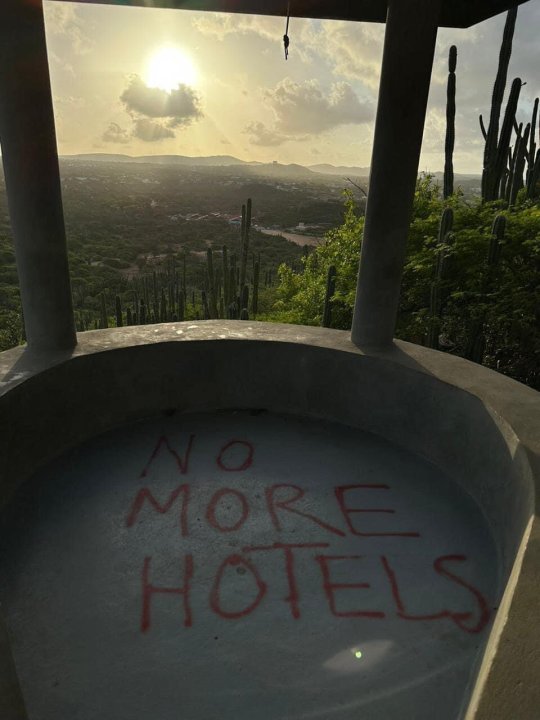




"No More Hotels"
Graffiti seen around Aruba in the Caribbean, denouncing the overconstruction of hotels and the extreme land loss the Indigenous people of the Island are facing.
27K notes
·
View notes
Text
Please join us for a message from John Rosenstern for our evening service.
🙏 please keep our tenant's union in prayer this week, I'm praying He will move hearts and minds and give us favor with those in government and agencies.
I'm praying for you all, He loves you, remember to keep your eyes upon Him and He will guide you and meet your needs. ❤️ love you 💜✝️
#pentecostal church#church service#christian#church#jimmy swaggart ministries#family worship center#God bless you#Jesus loves you#prayer request#fight gentrification#John Rosenstern
0 notes
Text
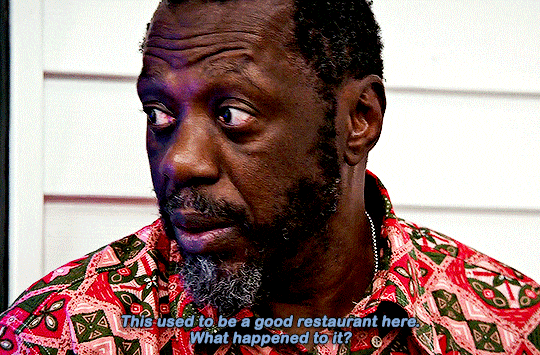
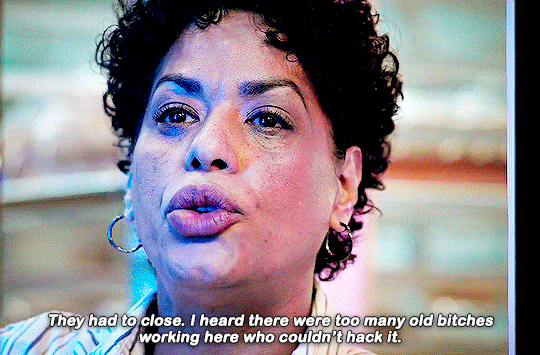

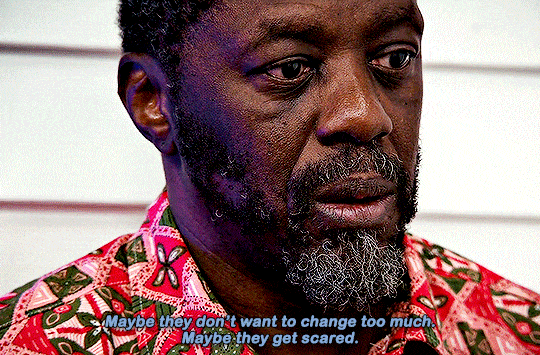
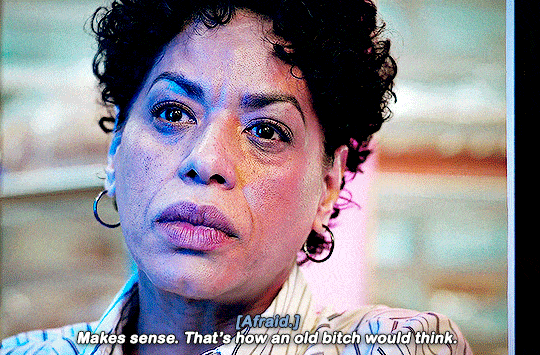
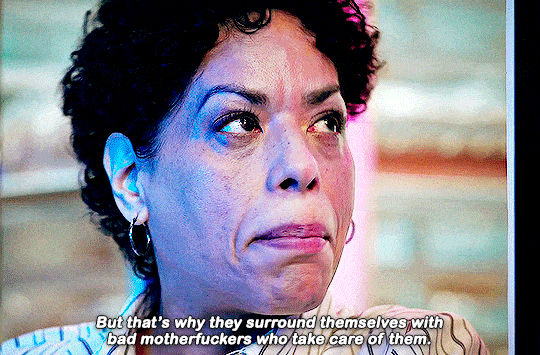
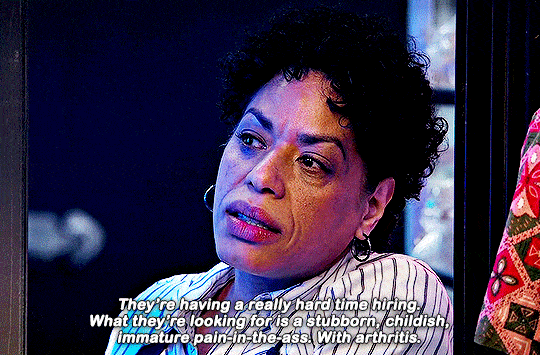
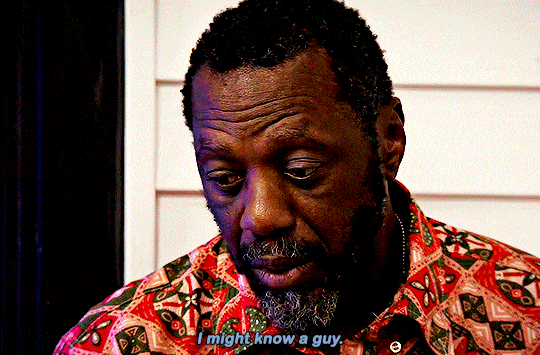
"We're closed' ma'am." "Thank you, sir. I was looking for some old, mean so-and-so named Tina." | THE BEAR SEASON TWO
#the tina school of tough love... get you a friend who will fight for you and also FIGHT YOU#but i so understand his fear of change. and in this case the gentrification of the restaurant#also i so wish we had an episode on these two. just a parallel look at how day in their life was going#the bear hulu#the bear fx#the bear#thebearedit#the bear spoilers#liza colón zayas#ayo edebiri#*op
4K notes
·
View notes
Note
Which is worse, TDR or whatever Magdalene Visaggio was gonna do to Superboy?
jesus fucking christ dont do this to me.
man............................... i mean magdalene's thing sucks more overall bc it'd just be another in a long line of comics that have done incredible damage to kon since geoff (exception being sb11). and also because most people don't know shit about kon or like decent writing or characterization i guess and just go "damn a trans woman!!! #representation!!!" and thought it was good just for that. and also bc now no one can do transfem kon without being associated with that pile of horseshit bc people in fandom will inevitably act like she invented the idea of transfem kon.
on the other hand i mean. tdr is worse in that it actually got published. and the tim in it is literally unrecognizable. we went from "i am so very clever! and when i am in love with how clever i am, my common sense goes right out the window." to "all i've got is a mountain of self-doubt and enough impostor syndrome to fill the bay." he would not fucking say that but now its canon apparently. so that sucks in a way magdalene's bs doesn't bc magdalene's bs didn't ever actually get published. but at least everyone hated it kdsdjhf
so like. magdalene wins the shit tier award in my book but just barely. megfitz gave her a real run for her money. i dunno man both of them suck so bad ksdjfhjdhkfjs
#answers#the-dracologist#white woman making superfam into a christian allegory vs white woman using a rich white boy to talk abt gentrification: FIGHT
28 notes
·
View notes
Text
Wanna fight gentrification? Take Mazatlán as an example!
Gringos were crying about how noisy Mexican can be, specifically CDMX and Mazatlan. What did the Mazatlecos did when threatened to have the bandas banned from the beach?
THEY ARE HAVING MASSIVE BANDA CONCERTS ALL OVER THE CITY.
Gentrification only benefits the people who push for it, not the rest of us.
FIGHT IT.
We welcome tourist and immigrants, we always have. We LOVE to share out culture and our love for our country and we LOVE when foreigners love Mexico.
WHAT WE DON'T WELCOME IS COLONIZERS. WE ALREADY KICKED A BUNCH OF THEM OUT 500 YEARS AGO, WE KICKED ANOTHER BUNCH OUT (some of which were US soldiers, that's where gringo comes from) 178 YEARS AGO, WE WILL DO IT AGAIN IF NECESSARY.
If you come to Mexico, YOU RESPECT MEXICO. Period.
3 notes
·
View notes
Text
Cassian Andor is so mother
#he literally adopts everyone or kills them#I love him so much#he takes in the most feral of cats and says ‘welcome home’#gosh#then that feral cat reminds him of why he’s doing all of this#because he was that angry cat himself once#and they become each others homes 😭#fic idea where cassian runs an animal shelter#jyn owns the bookstore next door with a books for prisoners program#they despise each others antics as neighbors and have a feud#she shoos away the cats that run into her shop#he doesn’t like how disorganized her store is and her cold nature#until their street is bought over by empire real estate and they band together to fight the gentrification#they’re setting up posters and fundraisers together for the street to keep their small businesses#Jyn stays late with Cassian one evening to discuss their ‘protest plans’#she gets to meet the animals and cassians favorite being the cat no one adopts#the one that snarls at anyone looking at it but loves only cassian bc he had the patience and understanding#cassian finds more excuses to visit jyn in her shop and asks for book recommendations often#she shows him her favorite book about a lost boy growing up to be a soldier and finding his way back home#they bond over socialist books and why they both started their businesses#they understand each other and are initially afraid of how alike they are#they fight the rent hikes with the other business owners in the neighborhood and declare their love for each other#the end lol#jyn erso#cassian andor#rebelcaptain#andor#rogue one
2 notes
·
View notes
Text
Sometimes I think about my magical girl OCs and it's like I have no idea if I'll ever have the time in my life to return to them but that story mattered so much to me
#its a group of black girls who get together to fight the rouge spirits of their neighborhood— displaced by gentrification#its solidarity and love and queerness and girlhood and intersectionality#sometimes i think about them and miss them
1 note
·
View note
Text
i'm dedicating far too much mental energy to the skullgirls debacle. another project got gentrified: i need to move on
the smart thing for me to do is take all these feelings and channel them into drawing again
0 notes
Text
i feel like a teen me might have been really tickled by all of the celebrities who’ve thrown their hat in the ring for the ottawa senators (like ryan reynolds, snoop, the weeknd) but knowing that big sports franchises are plays for big redevelopment just makes me anxious and depressed now.
housing prices and rent already too high in ottawa? just wait until a big developer buys the team and redevelops swaths of downtown, especially the more affordable parts.
just a hint from this article:
"How do you make money off an ice hockey team if they're not going to win the Stanley Cup every year? What we've learned in the last two decades is that sports franchises are the ultimate anchor to unlock real estate plays," said Naraine.
#nolympics#sports gentrification#clippers displaced tenants in inglewood#philly chinatown is fighting the arena#just to name a few examples
0 notes
Text

"Gentrification kills community"
Seen in Manchester UK
374 notes
·
View notes
Text
Time for the next part of our Bible 📖 study in the Book of Hebrews ���️
Please continue praying for the success of our new tenants union in our mobile home park against the new owners attempt at gentrification. Please 🙏 pray for healing for all of my family. ✝️🛐🕊 Prayers and love to all of you 🫂❤️
#pentecostal church#church service#christian#church#jimmy swaggart ministries#family worship center#bible study#prayer request#Book of Hebrews#Jesus loves you#God bless you#wednesday night bible study#gentrification#fight gentrification
0 notes
Text
The Punk-Factor of Punkpunk Genre
So, when I posted my history of Solarpunk, someone (probably not in good faith) asked: “So, what about the punk in all the other punk genres?!” towards my request to put the punk back into Solarpunk. And given that my autistic brain obviously cannot just let that stand… You know what? Let me talk about the other punk genre and in how far they are “punk”. I tried to be as exhaustive as possible, though there is a good chance, that I might have missed some of the punkpunk genre. So feel free to add.
Trying to judge the punkiness I do not assume punk as simple counter culture, but a specific ideology. Quote from Wikipedia:
[Punk ideology] is primarily concerned with concepts such as mutual aid, against selling out, hierarchy, white supremacy, authoritarianism, anti-consumerism, anti-corporatism, anti-war, imperialism, conservatism, anti-globalization, gentrification, anti-racism, anti-sexism, class and classism, gender equality, racial equality, eugenics, animal rights, free-thought and non-conformity
Most of the artwork here has been taken from concept art of either of the examples listed.
Sorted from most futuristic to pre(historic). Yes, the list is long.

Cyberpunk
We start with the OG punk genre, the one after which all other punk genre were named. Yes, you could argue that in fact the two genre following are more futuristic – but Cyberpunk kinda just had to start the list.
As a genre: Given that Cyberpunk had its start completely in literature it is the best defined in this regard. Taking place in a late stage capitalist dystopian world in which most is owned by megacorps who don’t follow anyone’s laws but their own, the protagonists usually are social outcasts fighting against their own oppression, trying to keep themselves alive in a world hostile to them. With cybernetics always being a core of the genre, it also tends to deal with the question of humanity in a “ship of Theseus” sort of way. How much can the human body be altered, before the human vanishes?
As an aesthetic: Cyberpunk is the most punk in terms of aesthetics, really. There is a lot of punk and grunge going on in terms of character design. Neon hair colors, fishnets and thorn up jeans jackets can be found here. As well as of course cybernetics on the characters. The world usually is a megacity with a stark divide between rich and poor, tons of neon signs, a slight Japanese influence, flying cars and somehow a constant downpour of rain.
Punk-Factor: Cyberpunk is the one punk genre, where the “punk” was chosen very knowingly as a name. Usually the protagonists are “punks” fighting for their place in the world against a suppressive capitalist system. (Also, they usually fit the punk aesthetic, if they don’t wear leather dusters.) It should be noted however, that especially in newer western Cyberpunk often the punkiness vanishes more and more – for the same reason we have so little Solarpunk: media that outright confronts the problems of capitalism is just less supported.
Examples: Neuromancer (1984), Mirrorshades: The Cyberpunk Anthology (1986), Snow Crash (1992), The Matrix (1999), Dredd (2012)

Biopunk
As a genre: As a genre biopunk is still fairly ill defined, as it mostly shows up as a subsection of Cyberpunk. Rather than the characters having cybernetic implants (or additionally to it) they are augmented on a genetic level. This can be all sorts of augmentations, changing anything from appearance to giving characters higher strength and agility, giving them claws or night vision, or in some cases even “magic” powers. Usually the genre tends to be set in worlds similar to Cyberpunk. In fact it might well be set in a cyberpunk world, only that characters with bioaugmentations exist parallel to those with cybernetics. Additionally, though, there is a subsection of this genre, that concerns reproductive rights.
As an aesthetic: Ironically biopunk is even less defined as an aesthetic. There is not a lot of biopunk art out there and most that exists can go in different directions. As such it often mixes elements from other punk aesthetics – like Cyberpunk, Steampunk or Dieselpunk – with an assortment of bodyhorror elements.
Punk-Factor: It is hard to define the “punkiness” of a genre, that barely exists for the most part. Usually, when it is set against a Cyberpunk backdrop, it might be very punky, but in other settings those punk elements vanish.
Examples: Ribofunk (1995), Altered Carbon (2002), Bioshock (2007), The Windup Girl (2009)

Nanopunk
As a genre: Like Biopunk Nanopunk mostly exists as a subsubgenre to Cyberpunk, often being set in a mostly Cyberpunk world, only that instead of or additionally to Cybernetics, the technology used to alter the human body is nanites. These serve the same function as the genetic manipulation in Biopunk, giving the human in question more strength and agility and at times more or less magical abilities. There is one common plot that comes up again and again, with an AI or megacorp turning the nanites against the people they inhabit or trying to control them.
As an aesthetic: Aesthetically Nanopunk does not have much in terms of its own identity. Most artworks relating to Nanopunk feature a similar aesthetic to Cyberpunk, with megacities and lots of neon.
Punk-Factor: This genre is so small, that it is kinda hard to judge the exact punkiness.
Examples: The Diamond Age (1995), Prey (2002)

Solarpunk
As a genre: Being another genre, that started as such, Solarpunk is a bit better defined. Solarpunk usually takes place in a world post-strive. It is post-capitalist and decolonial in its settings, usually featuring a world that has either formed against the backdrop of preventing climate collapse or in the aftermath of it. A lot of it features people rebuilding – or alternatively building communities. It always features elements about living in harmony with nature or trying to do so. So far, the genre is mostly defined by short stories, partly because there is still disagreements within the movement, how far a conflict can be taken to still qualify as Solarpunk.
As an aesthetic: Solarpunk has a very strong aesthetic definition, mostly featuring all sorts of cities and urban areas, that incorporate natural elements into the urbanity, with greenery growing on roofs and concrete car-centric streets being replaced with more natural, walkable areas. The character design aesthetic is not quite as clearly defined, but usually features natural materials and patterns usually seen within indigenous art.
Punk-Factor: Contrary to what many say, Solarpunk is fairly punk, as it very much embraces the entire anti-hierarchical, anti-capitalist mentality. With the big difference, that the punk mentality is no longer counter culture, but the mainstream culture.
Examples: The Dispossessed (1974), Nausicaä (1984), Laputa – Castle in the Sky (1986), Princess Mononoke (1997), The Summer Prince (2013)

Lunarpunk
As a genre: Lunarpunk is pretty much a subsubgenre of Solarpunk, just as Nanopunk and Biopunk are sprung off from Cyberpunk. It is so far ill-defined as a genre, but the general consensus is, that it is set in solarpunk-esque worlds, but with a heavier focus on mysticism or spiritualism, at times outright including magic. It also tends to feature a lot darker places, being set in underwater or underground settings – or alternatively at night.
As an aesthetic: Lunarpunk is far more of an aesthetic than a genre so far. It features dark places, often with bioluminescent elements in it. Often featuring a mixture of black and dark blue with lighter blue, violet or light green elements shining in the middle of it. Mushrooms – especially glowing mushrooms – feature repeatedly in artwork.
Punk-Factor: Given that Lunarpunk is barely defined as a genre it is hard to estimate the punkiness in it. If it gets more stories, will those still feature the anti-capitalist and anti-hierarchical messaging we see in Solarpunk? This should be the defining factor. Some of the artworks use little aesthetics from the punk scene, but nothing much more.
Examples: Bioluminescent: A Lunarpunk Anthology (2023)

Hopepunk
Honestly, I had no idea where to put this one, given that it might technically be set at any time and place.
As a genre: Hopepunk is very much a genre, not an aesthetic. It has been defined as the opposite of grimdark by its “inventor/name-giver” Alexandra Rowland. The basic idea is to create fiction that instead of taking a dystopian, defeatist and violent approach, takes one defined by hope and to some degree pacifism. As such the genre can be set in any setting, real or fantastic. It mostly is defined by the protagonists taking opposition to cruelty and violence, fighting for a better world and, crucially, also partly archiving it. Other than in usual Cyberpunk, where the best possible ending, tends to be, that the protagonists get to live a somewhat better life themselves, Hopepunk aims to better the life at least for groups of people.
As an aesthetic: Being fully a genre, Hopepunk has no aesthetic associated with it.
Punk-Factor: Hopepunk is punk less in the sense of the protagonists or things happening within the story, which might or might not be punk, but was named such rather because it is considered counter cultural towards the gross of media at the moment, that often strives for a “realistic, gritty, grimdark” outlook on the world. Basically it is saying: “Hope is punk.” I will not make any judgement on whether or not this is true.
Examples: The Long Way to a Small, Angry Planet (2014), Mad Max: Fury Road (2015), The Good Place (2016)

Mythpunk
As a genre: Another one, that does not really fit into a temporal sorting system, because once again it can be set anywhere between the stone age and the far future. The basic idea is, that the story interweaves postmodern storytelling with elements from mythology or folklore. This can mean mythological, genre-traversing retellings, but it can also mean, that mythology seeps into any given story bit by bit. As such the genre with probably the most media in the subgenre is Urban Fantasy, which often borrows from mythology and incorporates these elements.
As an aesthetic: Mythpunk as an aesthetic is a bit strange. There is definitely a mythpunk aesthetic that exists, often mixing familiar elements with elements from mythology and folklore (at times also including quasi-folkloric works of literature, such as Alice in Wonderland and the Wizard of Oz). Often just a bit dark and twisted.
Punk-Factor: To be perfectly frank, for the most part, there is not a lot of punk to be found in this genre. While there have been definitely punky stories told within the genre, this is more a story decision than something inherent to the genre.
Examples: Pan’s Labyrinth (2006), Over the Garden Wall (2014), Inscryption (2016)

Dustpunk / Rustpunk / Desertpunk
As a genre: Kinda grouping those above all together, because people argue about what they might entail and in some interpretations they kinda are similar: Post-apocalyptic stories set in a world of sand and rust. Often featuring a loner character, having to go up against everyone to ensure his own survival – and at times being forced to learn, that the lonerness might not win him (and most often it is a him) anything.
As an aesthetic: Aesthetically this tends to be very much post-apocalyptic, maybe in some cases with some more classical punk elements added to characters and surroundings.
Punk-Factor: Given that there is neither a system to rage against – nor a new, less hierarchical system – usually there is not that much punk outside of some aesthetic choices. Neither tend those stories go into constructing worlds of mutual aid or working against oppression.
Examples: Anything Mad Max should count for this.

Atompunk
As a genre: Atompunk usually deals with themes connected to the cold war – in some cases directly, in some indirectly. Often it overplays the American ideals that were pushed for during the cold war era and portrays scenarios in which American Exceptionalism slowly reveals itself as the dystopia most punks already know it to be. Outside of this vague idea for the setting, the genre is less described, as there is less of a clear script an Atompunk story might follow. So, little description of who might be the protagonist and what their role is.
As an aesthetic: The aesthetic of Atompunk borrows heavily from the Raygun Gothic aesthetic. So, futurism, as it was imagined in the 1950s and 1960s, with heavy influences from late pulp age science fiction art.
Punk-Factor: The aesthetic in this is definitely not punk. The stories often have some vague punk ideas of recognizing how fucked up the world has become, but given the genre is fairly wide in terms of stories, it is hard to give a definite answer to how “punk” it is. One can definitely tell punk stories within this genre, though.
Examples: Hitchhiker's Guide To The Galaxy (1978), Fallout (1997), Futurama (1999)

Dieselpunk
As a genre: Dieselpunk is once again an example of “strong aesthetic, but no clear genre identity”. Generally, Dieselpunk is concerned with the interwar period, but might cover either of the world wars. In some cases the genre features alternate timelines, in which one war happened and not the other, or in which another faction won, with the technological development being influenced by this as well. But as a genre it is not much defined. A lot of stories building on Lovecraft’s legacy feature Dieselpunk in some regards. And there is definitely a subsection of Dieselpunk stories centered around “what if Nazis won” or “what if Nazis somehow went underground and did their own technological development after the war”. Also, there are a lot of stories about pilots of war planes in this genre.
As an aesthetic: As an aesthetic Dieselpunk is more clearly defined. A lot of bare metal and the sorts of technology you would expect from this era, often with retro-futurist and art noveau elements in between. A lot of the fashion within the genre is defined by pilot and military clothing of the times, but at times also dipping into “roaring 20s” fashion styles.
Punk-Factor: In this genre I would generally say: “If the story involves punching Nazis, you might get a couple punk points – but otherwise this is not really punk.”
Examples: The Iron Dream (1972), Brazil (1985), Dark City (1998), Iron Sky (2012), Bitter Seeds (2010)

Teslapunk
As a genre: Yet another one of these, that exists mostly as a vague idea, with no clear definition. The basic idea is a world, that works on Tesla’s inventions. And as those of you, who watched Doctor Who, might know, Tesla sorta, kinda already invented the internet or had an idea of what it could be and how it could work. So a Teslapunk world is based in an alternate timeline, but might in fact go into light futurism. There is not much in this genre though with a unique thematic identity, as stories that use Teslapunk as a backdrop rarely have coherent themes.
As an aesthetic: The aesthetic of Teslapunk is basically “Steampunk, but with Tesla-coils and electricity”. Which is not a big surprise given that Tesla came from the same era that would also be the inspiration for Steampunk. So, we have a lot of Victorian fashion, maybe some light augmentation, airships, and – again – all the tesla coils you can muster.
Punk-Factor: As, again, I think punk is more about themes than aesthetic, this is once more not really possible to judge, because there do not seem coherent themes within the genre so far.
Examples: The Prestige (2006), Sherlock Holmes: A Game of Shadows (2011), Bioshock Infinite (2013)

Arcanepunk
Another one of those that do not neatly fit into the timeline…
As a genre: Arcanepunk takes place in a world, where both magic and technology have developed. In some cases both developed side by side, in others, we might have a technological world, that suddenly discovers magic by some happenstance. The fact is, though, that both exist parallel to each other or might at times be intertwined, with technology being powered by magic. This can exist at different technological stages, usually featuring settings inspired by the late 19th or early 20th century. But usually futuristic stuff that includes magic might be considered Arcanepunk, just as might stories that mix 18th century technology with magic. While also a vague genre, there is a repeating theme of magic being hoarded by those in powers and the poor and downtrodden finding ways to still use it in their own advantage.
As an aesthetic: Given that Arcanepunk’s setting is defined by the co-existence of magic and technology, rather than a specific technology, Arcanepunk has less of a defined aesthetic. Never the less, we have a part of punk aesthetics that often come up, as a surprising amount of Arcanepunk features characters with neon colored hair.
Punk-Factor: Another genre that is rather thin, yet, there is a surprising amount of stories featuring some punk ideas of fighting against an oppressive system and being counter culture to a main culture build around suppression.
Examples: Too Many Magicians (1966), Shadowrun (1989), Bartimaeus (2003), Arcane (2021) duh

Steampunk
Steampunk was the second genre to pick up the “punk” suffix and hence is as much responsible for the punk-punk as Cyberpunk as the originator.
As a genre: Being named as early as it has been, Steampunk kinda suffers the same issue as Cyberpunk itself. There is a lot of ideas there, but some are only vaguely defined. In general, though Steampunk always takes place in a world where the steam engine became the defining technology and was never replaced with the combustion engine. As such cultural aspects from the steam era, especially Victorian England and the Belle Epoche, still carry over for longer, than they did. So often we will see noble households based around similar values as the puritan Victorian English families, while the very poor are made to work in workhouses. At times we might also see themes of colonialism here. In some cases magic might exist in these worlds, as might electricity for some aspects. There is often a heavy inspiration from Jules Verne and H.G. Wells. Though it is still hard to define the “stereotypical steampunk story”, given that Steampunk offers a wide variety of stories, from adventure stories and romances, over to stories where people rise up against the Victorian-esque society.
As an aesthetic: Steampunk as an aesthetic is very much influenced by Victorian aesthetics and the time period of the late 19th century, mostly in the USA, Great Britain and France. But as all other punk genres it knows very well: “If it is worth doing, it is worth overdoing,” so steam-related elements are added to everything. Could
Punk-Factor: In the original idea for Steampunk was a lot of punk. “What if we took Cyberpunks ‘rage against the unjust system’ and made it 19th century” they asked. But given that the genre branched out so much, it is not necessarily there in all the stories. There is a ton of stories where people rage against that steam powered Victorian machine – but also a ton in which the Victorian world gets idealized and romanticized.
Examples: Thief (1998), The League of Extraordinary Gentlemen (1999), Wild Wild West (1999), Clockwork Century (2008) – also half of all Sherlock Holmes adaption made after 2000 in any medium usually use Steampunk elements

Silkpunk
As a genre: Silkpunk is hard to define, despite there being a clear definition. The reason for this is, that the person who coined the term – Ken Liu – had a very specific idea in mind. He explains that the idea is of a world that has technology as language. In which form is as important as function, is made to speak a language all of its own. Inspired by ideas from W. Brian Arthur and Chinese philosophy. However, what the wider Science Fiction and Fantasy community made from it was “Steampunk but East Asian!” But given he coined the term (and also the alternative feels vaguely racist) I am going to go with Ken Liu for this. While Silkpunk will usually be set in an East Asian inspired world, the central idea is about the duality of technology, which will also be addressed within the stories.
As an aesthetic: As said above, the idea Liu had for it was a world that features some technology, but technology that is as much about form and communication through it, as it is about function. So the technology here has strong visual ideas. At least that was, how Liu intended it. Once again, the wider community made “Steampunk, but East Asian” out of it.
Punk-Factor: There is not a lot of stuff in this genre for now – however so far I do not manage to see a lot of punk ideas in it, even though some of Liu’s stories definitely feature the concept of challenging a higher power.
Examples: Dandelion Dynasty (2015), The Black Tides of Heaven (2018), The Tea Master and the Detective (2019)

Clockpunk
As a genre: Once again storytelling in this genre is not really defined, but the worlds diverge a bit before the wide adaption of steam, instead featuring mechanical devices powered by coils and springs and somehow kept alive, often at least implied through some form of arcane magic that gives “live” to these mechanical inventions. Most examples of Clockpunk, however, tend to show up as settings for parts of fantasy stories. Any fantasy world might have this “Clockpunk” area, where protagonists might travel. Especially games tend to feature this. While there is definitely a trope of the “mad inventor” often going along with this, few other tropes stand out.
As an aesthetic: The aesthetic of Clockpunk tends to take some inspiration from the early 19th century, but tends to add a lot of gears to everything, with even city wide gear constructions keeping things working. We often will find mechatronic characters, such as wind up soldiers or wind up dancers.
Punk-Factor: Once more, there are so few stories told, that it is kinda hard to speak about how punk this is. Most stories told so far, however, do not feature punk elements.
Examples: The Great Mouse Detective (1986), Hugo (2011), Clockwork Planet (2017)

Whalepunk
Please note: This is one of those genre, I would love to see more in, though so far it is barely explored.
As a genre: And you might ask: “Why do you even name those genre, that exist mostly in theory?”, to which I might answer: “Because I am a nerd.” As all these retrofuturists genre, Whalepunk imagines mostly an alternate historical timeline, where the technology that became defining was based around whale oil. This means that in Whalepunk often whalers or harbors play a big role, though as the genre is again very thinly spread, it is hard to say what “THE whalepunk” formular is. It seems there is a tendency, to mix some mysticism or magic into the genre, though, as the idea of hunting sea monsters often plays into it as well. Good chance that it could at some point merge with Cthulupunk (which I did not name separately, because most of it is either covered in Whalepunk or Dieselpunk).
As an aesthetic: The aesthetic of Whalepunk is basically “Steampunk, but with more sailors, ships and sea monsters”. There is definitely a bit of Oceanpunk mixed into it as well, with some aesthetics being somewhere between Steampunk and Dieselpunk. (Which is kinda ironic, because whale oil was mostly used in the early 19th century.)
Punk-Factor: And again. There so far is not a lot of connective thematic tissue within that genre, so exploring themes is kinda hard.
Examples: Dishonored (2012), Dredge (2023)

Oceanpunk / Piratepunk
As a genre: It really is hard to divide the Piratepunk out of the Oceanpunk, though some might call it different. The idea here is that this genre features stories mostly set on the ocean and often more heavily leaning into fantasy, than science fiction. While the worlds might feature technological elements, they will almost certainly feature magical elements of some sort. The characters will usually be seafaring one way or another and stories might involve any sort of adventure. There might be a storyline, though, about one company or nation trying to control the seas – often times through magical means – with the characters often unwillingly being made to oppose them. This genre might also take place in a post-apocalyptic setting with a flooded planet.
As an aesthetic: While the aesthetic is not clearly defined, there is a good chance that it borrows heavily from the late 17th and early 18th century and the golden age of piracy, when it comes to both ships and fashion sensibilities.
Punk-Factor: Pirates, at least as far as modern media imagines them, tend to be very punk, as they tend to inherently oppose any sort of government and what not. While the punk is not there in all of the stories, a lot of the most popular stories from the genre will feature at least lightly punky elements.
Examples: One Piece (1997), Pirates of the Caribbean (2003), Assassin's Creed IV: Black Flag (2013)

Dungeonpunk
As a genre: So, the idea of the genre is basically “What if Cyberpunk, but Dungeons & Dragons?” Usually set in a vaguely medieval world, this world still shows the same corporate corruption as your usual Cyberpunk world. Adventurers are just another resource to be exploited by the system, their day job involving going on yet another dungeon crawl. For this there might be some technology entirely powered by magic, with those magic items taking over the same functions technology might have in a Cyberpunk world. And yes, indeed some brave dwarf, elf or halfling might rise up and challenge the corporate dungeon syndicate. (As you might sense: Yes, this genre tends to be at least partly a bit of a parody of the punkpunk idea. Though it also can be played straight as “Cyberpunk conflicts, just that all technology is somehow magic.”)
As an aesthetic: This is once again one of the examples, where there is a clear idea behind it – but absolutely no clear aesthetic, as this genre might cover anything from medieval settings to a lot more modern stuff.
Punk-Factor: The base idea, being heavily inspired by the base idea of Cyberpunk, just from a very different perspective. But too many people read the genre as “Magic Technology, yay”, in which case, no, it is not punk.
Examples: Dungeons & Dragons can be played this way, also Final Fantasy VI – XIII definitely counts.

Sandalpunk
As a genre: I mostly include this for the sake of it, because this genre tends to boil down to “fantasy set in ancient Greece or Rome, but with vaguely anachronistic elements”. It might also include alternate history stories (even going so far as Science Fiction) based on the idea “What if Ancient Rome/Ancient Greece never fell?” There is no real overarching themes, even though I could imagine some interesting way one could build those up. So far, though, it is mostly a vague gesture towards: “SciFi Fantasy, but with more ancient civilizations.”
As an aesthetic: The aesthetic is usually just Ancient Rome or Ancient Greece, but with more magic or anachronistic elements.
Punk-Factor: Given the super vague nature of the genre and the fact that it seems more like a genre of hindsight (with most media being declared this having been released even before 2000)… Nobody wrote those stories to be punk. The one punk thing I can see about several of these stories is people challenging Gods, but… That’s about it.Examples: Hercules: Legendary Journeys (1995), Xena: Warrior Princess (1995), God of War (2005)

Stonepunk
As a genre: The basic idea of Stonepunk is, that it is set in a stone age world, but with the technology being pressed towards a very anachronistic end, which is often played for laughs. Basically it gives stone age people a modern seeming world, though not really. Often enough this is used to make a point about the modern world and parody it in some regard. An argument can be made for stories, that feature stone age technology people being somehow subjected to modern technology (for example through time travel or space travel) also possibly falling into this genre.
As an aesthetic: Usually the aesthetic of Stonepunk is one of an overplayed stone age setting. The clothing characters might wear are not what we know is historically more accurate but really just “everyone wears a pelt around their shoulders”. Meanwhile stone age tools get spun to be used as all sorts of modern technologies.
Punk-Factor: The genre does usually not feature punk themes. However, the nature of parodying and challenging the modern world tends to be punk in its own merit, I assume?
Examples: The Flintstones (1960), The Croods (2013), Horizon: Zero Dawn (2017)
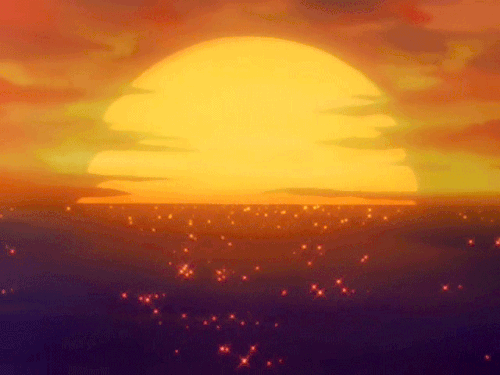
That's it. That's the list.
Feel free to add to it.
#long ass post#punkpunk#punk genre#definition#cyberpunk#steampunk#biopunk#nanopunk#solarpunk#lunarpunk#hopepunk#mythpunk#dustpunk#desert punk#atompunk#dieselpunk#teslapunk#arcanepunk#silkpunk#clockpunk#whalepunk#oceanpunk#dungeonpunk#sandalpunk#stonepunk
964 notes
·
View notes
Text
Brother Faulkner is great because he is fighting the gentrification of his god by completely failing to understand it's a god of change.
239 notes
·
View notes
Note
here for the mandalorian rant ☕️
um well the first episode of the brand new season of disney+’s flagship star wars show was entirely... filler. the dialogue was incredibly bad, not even written badly but as if no-one had written it at all. entirely flat and devoid of life, in a show with a faceless protagonist whose dialogue literally has to carry all the weight. din continues to have no opinions, no emotion and nothing to say
as for the plot, what even happened in this episode? we open with the mandalorian covert ritually giving a child their helmet, but this is not explored at all, it’s only there to be interrupted with a giant monster fight for absolutely no reason, as if this show has been written by six-year-old me livening up clicking my barbies together by grabbing my toy dinosaurs. din has conversations with the armourer and bo-katan purely to rehash the information we’ve already been given, partly because half of it was in a bad show the casual audience won’t have watched. neither of these characters is doing anything.
din visits greef karga, who is now discount lando “gone respectable” but instead of having personality he’s just really into gentrification and this is presented completely uncritically. din, a character most charming for being the beaten up mercenary underdog of the galaxy, suddenly hates pirates and disorder (well, hates would imply he shows emotion—dislikes pirates and disorder? is mildly perturbed by pirates and disorder?), and pals around with high magistrates who offer him a position as a cop/landed gentry (they actually use the words “landed gentry”). there’s a couple of meaningless unfunny comic relief scenes because this is all that grogu is here for now, complete with a reference to, of all things, the rise of skywalker. in what is apparently the main plot of the episode, which is, i repeat, the first episode of the brand new season, din takes up a fetch quest to get a random droid part for an absolutely laughable reason that does nothing but completely negate a character arc from season 1 and everything we have been shown since, just reminding you that not even death will be allowed to have emotion or narrative weight, or prevent disney from dragging back onto your screen anything that will sell. he doesn’t actually do this fetch quest, btw, he just gets given it, because apparently we have to do multiple episodes of this
did i get everything? was that the whole episode? oh wait there was the fight with the pirates in space. i forgot it because there was zero tension. those pirates also earlier wanted to... have a drink in a school with greef, i guess, in a completely baffling scene? i can’t imagine there was any point to this pirate bit except to put fight scenes into this filler episode and force the visual effects people to carry the entire lumbering weight of this show. one has to assume that otherwise the pirates would have had personalities or motivations. oh, also purrgils appeared in this episode, because this is the Star Wars Cinematic Universe, and you’d better watch all the interconnected shows so all your beloved characters can eventually come together to swap lifeless quips on screen, just like you always wanted.
a droid drops a statue’s head on top of a murder droid to stop it, purely so din can say, “now that’s using your head.” if you were wondering what i meant about the dialogue.
i don’t even need to get into the politics of the story they’re telling. i don’t need to humiliate it further by comparing it to andor. it’s just bad to watch on a basic technical fundamental level, and it’s not headed anywhere better, because they will be churning out this story for cash forever with no goal or meaning, under circumstances where i cannot seriously even imagine caring about star wars anymore. hope this helps!
627 notes
·
View notes
Text
Yo! Looking for more games like Hades?
Check out Midautumn! A fellow indie character and narrative-focused roguelite game about Asian diaspora and Demon gentrification!

We got roguelike dungeon crawling gameplay with engaging and unique combat mechanics! And accessibility options to ensure you can play how you'd like!


A range of different enemies to fight, including epic boss battles!


A whole cast of diverse characters complete with beautiful art and voice acting, including ancestors who offer their gifts to help you along the way!


Distinct and detailed animated pixel art style! Set in a fictional town of Nambo Quay, California and the spirit world right below it!

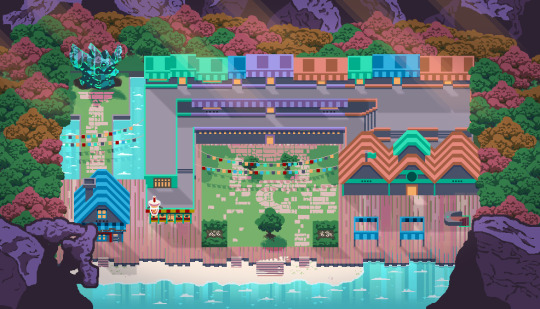
Plus a seriously bumping soundtrack! All made by an incredible team of devs of Asian diaspora and already fully funded on Kickstarter!

Available now to wishlist on Steam and coming to early access May 9th 2023!
#hades#hades game#midautumn game#midautumn#game dev#indie dev#roguelike#roguelite#indie game dev#indie games#flashing gif
715 notes
·
View notes